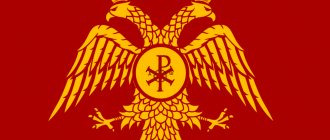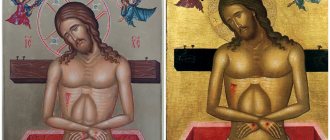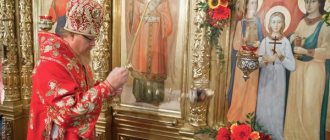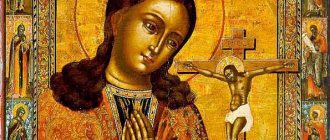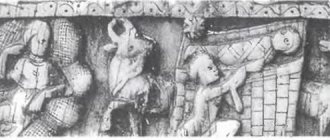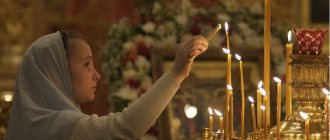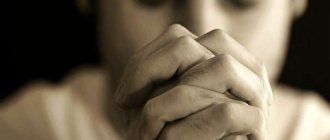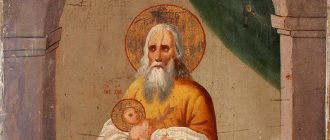Seeing the skull and crossbones symbol, many of us immediately think of a pirate ship from movies about pirates. However, few people know what this unpleasant sign actually means, in which particularly impressionable individuals see nothing more than death. Yes, on the one hand, the skull means the frailty of earthly existence, but this is not the whole symbolism of this sign. It is found in many cultures where it has different meanings, not only relating to the mortality of the human being, but also to the immortality of the eternal soul, which has the property of being reincarnated from body to body. You will learn more about the skull symbol from our article.
Symbolism of the skull sign
Death has always attracted and attracts the attention of people as the unknown, as a secret hidden under a veil. What's there behind that curtain? Is there another existence beyond earthly life? These questions are of interest to every person living on earth, for each of us has to cross the threshold of earthly life into another existence. The skull symbol has a double meaning. On the one hand, it means incredible vitality, because after the decomposition of the mortal human body, it is the bones that remain incorruptible, in particular the skull. Based on numerous ancient philosophical sources, it is the skull that is a vessel, a temporary refuge for the immortal human soul, coming to earth to perform certain specific tasks.
This symbol is popular among certain groups of people, more often associated with extreme or military activities, and is used by them as ritual symbolism. This sign also leads to philosophical reflections about death and life, and often means isolation from society, hermithood.
The main meanings of the skull are:
- memory of the frailty of our earthly existence;
- the experience of death is a reminder of the transformation of life, of a change in values. What is valuable to many, for example, various material benefits, cannot be taken with you to other worlds, where only spiritual qualities are valued, those that the soul has accumulated during its next incarnation;
- the vanity of everything worldly, the fleeting nature of earthly life, death, the transition from one state to another;
- transience of time, outcome, signs of death, gods of the dead.
The skull and crossbones are a warning of mortal danger or symbolize the life force contained in the head and shin bones.
Commenting Rules
These simple rules will help you enjoy communication on our website!
To ensure that your visit to our site continues to be enjoyable, we ask you to strictly follow the comment rules:
The message must not contain more than 2500 characters (including spaces)
The language of communication on the AiF website is Russian. You may use other languages in discussions only if you are confident that readers will be able to understand you correctly.
Expressions containing profanity, degrading human dignity, and inciting ethnic hatred are prohibited in comments.
Spam is prohibited, as well as advertising of any goods and services, other resources, media or events that are not related to the context of the discussion of the article.
Messages that are not related to the content of the article or the context of the discussion are not welcome.
Let's respect each other and the site where you and other readers come to chat and express their thoughts. The site administration reserves the right to delete comments or part of the comments if they do not meet these requirements.
The editors reserve the right to publish individual comments in the paper version of the publication or as a separate article on the website www.aif.ru.
If you have a question or suggestion, send a message to the site administration.
History of the skull symbol in different cultures
In many ancient cultures, this sign personified strength of spirit, vital energy and the ability of souls to reincarnate. There are many legends that involve the skull and crossbones. Some sources indicate that this symbol is related to the Freemasons. An interesting legend says about this:
“In Ancient Phenicia there was a large city of Sidon, whose ruler was in love with an Armenian woman of noble birth. The woman also reciprocated with the powers that be. Their love was so sublime that during their lifetime they never had intimate contact. But a misfortune happened - the woman died. When she was buried in the crypt, the grief-stricken lover made his way there after dark and could not restrain himself - he copulated with the deceased. After he was about to leave, he heard a voice that announced to him: “Come here in 9 months and you will find your child.” When the ruler returned to the crypt after the stated period, he found a human skull between his beloved’s legs and again heard the same voice, commanding him to take the skull with him, for this skull would help defeat all enemies.”
In ancient times, among many nations, the skull was considered the repository of the soul, therefore, if one of the relatives died, he was buried without a head, and the skull was placed in the home in a prominent place of honor, and before that it was painted in different colors.
The Celts believed that a sacred power was hidden in the skull, which protected a person from all misfortunes and diseases, and the Mayan Indians generally had a cult of the skull. The head of the deceased was cut off, the skull was cleaned, a hole was drilled in it and worn as a talisman around the neck.
The Celts also believed that the head of the defeated person retains his strength even after death, so the head of the defeated enemy was left to serve for the benefit of the winner. It was framed in silver or gold and used as a drinking vessel. It was believed that whoever drank from such a vessel absorbed all the power of the owner of the skull. Often the heads were attached to spears, after which they went into battle. If the Celtic leader managed to kill the enemy leader, then the latter’s skull was presented as a gift to the temple. And if the leader himself died in battle, then his head was also cut off and taken with them so that it would not fall into the hands of the enemy army.
Muslims have a saying, the meaning of which is that the future of a person is indicated on his forehead in the seams of the skull bones among the curves resembling letters.
The meaning of the death's head in the traditional symbol system
Ancient life-affirming symbolism of the death's head
dates back to the early Paleolithic. People of the Stone and Bronze Ages revered the skulls of the dead as strong amulets, containers of special energy. Ethnographers came to these conclusions after analyzing the most ancient burial grounds and sanctuaries found during excavations in Europe, Asia, Africa, Australia and the Americas. People of the past made skulls into objects of worship. They treated them with herbal decoctions, polished them, decorated them with carvings, covered them with leather, and set them in gold and silver. After this, the skulls were placed in ancestral tombs and sacred places. There they had to protect the tribes that revered them from disease and death, crop failures, loss of livestock, female infertility and other troubles and troubles.
Pagan beliefs of many peoples claimed that it is in the head, that is, in the skull, that all the life-supporting qualities of the individual are concentrated. Therefore, such a desirable prey for any warrior was the skull of the enemy, which was often used as a feast bowl. This meant taking the strength and valor of the deceased. It was not for nothing that the Pechenezh prince Kurya made himself a luxurious cup from the head of the great warrior Prince Svyatoslav, Olga’s son, who he killed. In addition, it was customary for many tribes to protect their settlements, barns, and animal pens with their heads (often ancestors). It was believed that a skull buried in a field would help the land produce a good harvest and protect it from drought.
In later times, skull worship took on more complex forms. He began to be associated with one or another deity, becoming his attribute.
The Phoenician goddess of the moon, nature, motherhood, harvest and abundance, Astarte (Ishtar), was sometimes depicted standing on a pile of skulls. This emphasized her connection with the underworld of the dead, which becomes the source of life.
The ancient Egyptian sister and wife of Osiris, Isis, who was one of the variations of Astarte, in rare drawings also stands next to the death heads and seems to be talking with them.
Among the ancient Greeks, one of the most revered Olympic goddesses was Athena, who was associated with wisdom and law, patronized the bearers of knowledge, and was the personification of knowledge that underlies the universe. She was born from the head of Zeus, and on her shield was also depicted the head of the Gorgon Medusa.
The Scandinavian thunderer Thor wore a ring on which, among other things, a skull was knocked out. The Vikings in general very often had drawings and ornaments, part of which were the bearded dead heads of ancestors, who give various predictions and advice to the people bending over him.
The Celts also revered skulls as sacred objects of worship. They considered them to be the seats of the soul, the very essence of existence. The Celts believed that the head, even after the death of the body, could continue to live fully, becoming a special kind of deity.
The ancient Slavic god of the sun and fertility Yarilo holds a skull in one of his hands. Our ancestors considered the dead head an excellent amulet against evil spirits and diseases, so they not only planted skulls on stakes near their homes, but also placed them in beds.
Skull in Christianity
In Russian culture, the skull with crossbones is of Christian origin and is called Adam's head. From historical data it is known that the place for the crucifixion of Jesus Christ was the place where the remains of the Progenitor of all mankind, Adam, were buried. That is why Golgotha is called the Place of the Skull, that is, literally translated from Greek as a “cranial” place. According to legend, the blood that spilled on the bones of Adam from the wound inflicted on Christ by the spear of a Roman centurion washed the Forefather of all people from his sins, after which the Savior descended into hell for three days (Friday, Saturday and Sunday) in order to transfer everyone from there to heaven Old Testament righteous people, including Adam.
The skull is an integral attribute of Christian and Hindu hermits who decided to renounce the corruptible earthly world and take the path to salvation.
The skull and crossbones are found on many icons that depict the crucifixion of Jesus Christ. It symbolizes not only the death of the Savior on the cross, but also His resurrection to eternal life.
What does the skull at the base of the cross mean in Orthodoxy?
On the Orthodox cross at the feet of Jesus Christ you can see a cave with a human skull. According to Archpriest Alexander Ilyashenko , this skull belongs to Adam. According to legend, he was buried on Mount Golgotha (from Hebrew - “place of skull”, from Aramaic: “skull”), where Jesus Christ was subsequently crucified. During the execution, Jesus' blood seeped through the ground and washed over Adam's skull.
“There is a traditional idea that when the Savior was crucified on the cross on Mount Golgotha, when he betrayed his most pure soul and his earthly life ended, then the rock on which the cross was fixed cracked to the very foundation. At the base of this rock was the skull of Adam, who committed original sin and thereby introduced sins into human life. According to legend, the blood of Christ washed Adam’s skull, and thereby the Savior delivered people from sinful power and dependence on sin. This is the saving feat of Christ and the salvation of Adam himself, who was the culprit of the Fall and the appearance of sin as such in the world,” says Father Alexander.
It is believed that it was on Golgotha that the salvation of mankind began, where the blood of Christ was shed for the atonement of human sins. The image of the head of Adam, buried on Golgotha, began to appear under the crossbar with two bones lying crosswise as a symbol of sacrificial atonement for sins. The skull is depicted not only on crucifixes in Christian churches, but also on body crosses, as well as on the vestments of schema-monks - monks who have taken special monastic vows.
The most interesting things on social networks
Top 5 read
2020 JSC "Arguments and Facts"
General Director Ruslan Novikov. Editor-in-Chief of the weekly “Arguments and Facts” Igor Chernyak. Director for development of digital direction and new media of AiF.ru Denis Khalaimov. Chief editor of the AiF.ru website Vladimir Shushkin.
The media “aif.ru” is registered with the Federal Service for Supervision of Mass Communications, Communications and Cultural Heritage Protection, registration number El No. FS77-31805 dated April 23, 2008. Founder: Argumenty i Fakty JSC. The website “aif.ru” operates with the financial support of the Federal Agency for Press and Mass Communications.
Chief editor of the site: Shushkin V.S. e-mail, tel. 8 495 783 83 57. 16+
All rights reserved. Copying and use of complete materials is prohibited; partial quotation is possible only with a hyperlink to the website www.aif.ru.
Tibetan skull symbol
In addition, the symbol personified the stages of development of Tibetan deities. Meditation on human remains (skull and bones) was popular among the Tibetans. Thanks to this meditation, those following the path of self-knowledge and spiritual development were able to overcome the fear of death, while not forgetting about earthly existence in a mortal body. Tibet previously had a ritual vessel - a gapal (kapala) bowl, made from the upper part of a human skull. It was used for ritual purposes in Hindu or Buddhist Tantra. At the same time, it was not always filled with simple wine. The drippings were often depicted as filled with blood mixed with some of the organs of evil beings, such as the ears, heart, or tongues of demons.
Pirate skull symbols
The skull and crossbones were depicted on the pirate flag, although pirate ships dating back to the mid-17th century had more than one flag, each with its own special meaning. But the most remarkable thing was the black flag with a skull and crossbones. It had such a funny name - Jolly Roger and was used by pirates in the 17th-18th centuries.
This banner sent a call to the oncoming ship to immediately stop and surrender. If the ship did not respond to the warning sent, then a red flag was raised after the black one, which meant the intention to immediately begin boarding. At the same time, there could be no talk of any mercy.
Often a flag with a skull was used during epidemics of fatal diseases, plague or cholera. Pirates also often used this flag in order to frighten a more powerful enemy and avoid collision from more powerful ships.
Use of the symbol by the military
The skull and crossbones were in demand by the military in the 18th century. It was sewn onto military uniforms. This symbol was popular in some types of troops in many countries - in Britain, France, Austria, Poland, Italy, Hungary, Finland. In ancient Germanic states, such as Prussia and Brunswick, there were both cavalry and infantry units, on the uniforms of whose soldiers there were images of skulls and crossbones. A terrifying element of the military clothing of Prussian cavalry was a hat with a silver skull and crossbones emblem.
In the Russian Empire there was the 5th Alexandria Hussar Regiment called the “Hussars of Death”. It consisted of French royalist emigrants who fought against the revolutionary regime in Russia. The emblem of this regiment was a cross, in the center of which was a skull and crossbones. This symbol was also used by some units of the Red Army, as well as by members of the anarchist detachments of Nestor Makhno.
In World War II, the symbol was used in the uniforms of all SS divisions. It was also applied to daggers, chains of gorgets, flags, rings, standards, and musical instruments (pipes and drums). SS chief Sturmbannführer Heinrich Himmler was very proud of the emblem of his unit and at every opportunity he told everyone about its history.
Currently, symbolism has practically lost popularity. Is it that the skull itself, together with some additional elements, for example, wings, lightning, etc., is still used in the United States by Commando units and some other paramilitary units of the special services.
Dedicated to my fellow White Guards in the Volunteer Corps. It seems necessary for the author to say a few words about the well-known “skull and bones” emblem, one of the oldest symbols in the history of mankind, which, nevertheless, is worn in the eyes of many of our compatriots and contemporaries, disoriented by malicious propaganda or simply suffering from a lack of basic knowledge , quite odious and sinister character.
The symbol of the “death’s head”, that is, “skull and bones”, incomparably more ancient than the SS and than the German National Socialism that gave birth to these very SS, is by no means some exceptional invention of the developers of Nazi and proto-Nazi symbols. Suffice it to recall an example from a relatively recent of the past, which has become almost textbook. In countless Soviet-era memoirs, retired participants in the Spanish Civil War of 1936-1939 recalled the same thing. Here the Spanish republicans are being shown the “cult” Soviet film of the Vasilyev “brothers” “Chapaev”. The climactic scene comes - a “psychic attack” by Russian white “shock” officers under a black banner with a white skull and crossbones - and then the Spanish Republicans who filled the cinema hall begin shouting: “Fascists!” shoot at the screen with all guns.
It is absolutely clear that for the Soviet and, more broadly, Bolshevik and generally “leftist” consciousness of that distant era, “skull and bones” unambiguously symbolized absolute evil. Therefore, it is not surprising that the Soviet consciousness unwittingly (or voluntarily) associated Russian “fascists”-White Guards with German “fascists”-SS men. The general style was immediately recognizable, even if on a subconscious level. As I remember now, I remember an episode from the book “Vitya Korobkov, Pioneer Partisan”, which my parents bought for me in my distant childhood in Feodosia (unfortunately, I did not remember the name of the author), which described how “a lanky officer with a skull on his sleeve jumped out of a German car. "SS men!" - flashed through Vitya’s brain..." - although the Russian “Kornilovites” and other “shock soldiers of Chapaev’s times” wore a skull on their sleeves, the SS men (except for the ranks of the “Totenkopf” units guarding the concentration camps) wore a skull on their headdresses, and on the sleeve - not a skull, but an eagle with a swastika-kolovrat in its talons!
Over time, things went so far that in the book of essays on the history of Russia (for foreigners) “The Origins of History” (Moscow, Higher School, 1989), published by the late Professor N.N. Yakovlev (the same one whom the now deceased academician A.D. Sakharov publicly slapped in the face for unflattering comments about his wife in another book by the same professor, “CIA against the USSR”), even the Teutonic knights (!) in the battle on Lake Peipus (in 1242!) perform under the “black banner with a white skull and crossbones”! So much so that the symbol of the skull and crossbones in the era of “developed socialism” began to be associated in the Soviet consciousness with something initially hostile and alien, becoming a kind of “anti-symbol”.
Meanwhile, the skull and bones, as the most steadfastly resistant to decay, that is, decomposition, and the least susceptible to destruction of organic tissue, in most ancient cultures have long symbolized the ability for bodily rebirth, vital energy and strength of spirit, without being, contrary to widespread belief, delusion, a symbol of intimidation, destruction and death.
This dark meaning was put into it, as we will see later, only by anarchists and Bolsheviks during the October Revolution, the subsequent period of the “Red Terror” and the civil war of 1917-1922 in Russia.
It is no coincidence that the Bolshevik writer Artyom Vesely (during the period of Stalin’s “Great Purge”, he himself fell under the “Red Wheel”, which he so diligently helped to turn during the bloody years of the Russian Troubles - “the cat shed a mouse’s tears”!), depicting the revolutionary revelry in the novel that brought him fame -in the chronicle “Russia, washed in blood,” he wrote: “The detachment entered the village under a black banner, on which crossed bones, a skull, a rising sun – similar to a cock’s comb – and in large big-eyed letters the menacing words: THERE IS NO SALVATION were woven in light silk. CAPITAL MUST PERISH."
The “skull and bones” symbol has been widely used in Russia since the baptism of ancient Rus' by the Holy Equal-to-the-Apostles Prince Vladimir, if not earlier. It’s easy to see this by going to any Christian church.
(and not even necessarily in the Orthodox Church - Western chroniclers testified to the existence in 1176 in Jerusalem of the spiritual-knightly Order of the Good Death, whose members wore black cloaks over their armor with a white skull and crossbones on the right shoulder!; see figure number 1 on the placed above is a tabloid with images of knights of medieval military monastic orders of the Crusades period), where, having looked more closely at the images on the Crucifixion, we will almost always see at the base of the Calvary cross this very “sinister” symbol - the skull and crossbones.
The fact is that, according to Christian Holy Tradition, the place for the crucifixion of the Savior was chosen by God’s providence exactly where the mortal remains, that is, the skull and bones, of the progenitor of the human race, Adam, rested. Therefore, Golgotha (translated from Aramaic as “Bald Skull”) is also called Kranievo (translated from Greek literally “skull”), or forehead place.
According to legend, the blood and water that flowed from the rib of the crucified Christ - the “New Adam” - pierced by the spear of the Roman centurion Longinus, in order to ensure the death of the Gospel Teacher condemned to the cross, spilled onto the bones of the “Old Adam”, miraculously washed him from his sins , which was a symbolic prototype of the subsequent descent of Christ into hell for three days - from Friday to Sunday - in order to bring the Old Testament righteous from there to heaven, starting with the Forefather Adam. Therefore, the skull and bones, called in Rus' since ancient times “Adam’s head,” entered Christian and, including Orthodox, religious symbolism as a sign of sacrificial death in the name of future salvation through resurrection to eternal life. That is why the “Adam’s Head” adorns not only crucifixes in Christian churches - a kind of “model of Golgotha” - but also pectoral crosses and the vestments of schema-monks - monks who took extreme monastic vows, as if they “lay down alive in a coffin” in order to be reborn from it to life eternal.
When the Orthodox squads of the Holy Blessed Grand Duke of Moscow Dmitry Ivanovich, nicknamed Donskoy for his great victory in 1380, went out to fight the Horde on the Kulikovo field, the battle began with the duel of the Horde hero Chelubey with the monk of the Holy Trinity Monastery Alexander (Peresvet), on whom The Holy Venerable Sergius of Radonezh himself laid a schema before the campaign... of course, decorated, as it should be, with the image of the Calvary cross with the “Adam’s head” - a skull and crossbones!
The monk Alexander-Peresvet died, but he also struck down the non-Christ, falling on top of him, thereby testifying to his victory and instilling faith in victory in the hearts of all Russian warriors. Thus, the symbolic meaning of the “skull and bones” emblem, put into it by Christians, and not only Russians, was fully justified: “Trampling death with death!”
Throughout human history, the death's head emblem has been used by British, French, Finnish, Bulgarian, Hungarian, Austrian, Italian and Polish troops, mainly cavalry, aviation, flamethrower, assault and tank units, US Army special forces, etc. d. The German states of Prussia and Brunswick have long had cavalry and infantry units with skull and crossbones emblems on their headdresses. Since the middle of the 18th century, the symbolism of “death-immortality” became especially popular in the armies of Western European countries. The romantic fashion of that time dictated to the army the need to add to the usual symbolism and military attributes a skull over crossbones in combination with black, red and white colors for the decoration of uniforms.
Thus, by the way, the foundation was laid for the later Russian and German “shock units” - for example, the Kornilovites (who had black and red caps with a silver skull and crossbones, black uniforms with white piping, black and red shoulder straps with a silver “death’s head” and white piping, a black and red “shock” chevron corner on the right sleeve, a patch with a skull and crossbones on the left shoulder, silver rings with a skull (a prototype of the SS “Totenkopfring”!), a black and red banner with a white skull and crossbones - and Hitler’s SS men , who actually adopted from the Kornilov drummers their symbolism of “death-immortality” and the black-white-red color scheme.
The first to wear such a “sinister” (in the opinion of many) uniform under Frederick the Great in the mid-18th century were the Prussian “dead-headed hussars” (Totenkopfhusaren), and then the Brunswick “black hussars”.
Although, regarding the epithet “sinister” in relation to black military uniforms, we, the Russian people (or at least those of us who have not yet lost our historical memory!) have something to object to! Black is the color of the liturgical vestments of Orthodox clergy for Easter of the Passion of Christ. In the severe cold of February 1918 on the Don, the path of the red gangs near Novocherkassk was blocked by teenage cadets, many of them only twelve years old, taller than their three-line rifles, short-haired, wearing black uniforms - and died, but did not surrender to the red beast! I wonder which of the honest Russian patriots will find the black color of the uniforms of these young martyrs who defended the honor of Russia ominous!?
As for the Prussian “death’s head hussars,” their uniform consisted of black chikchir, dolman and mentik and a black mirliton hat (Fluegelmuetze) with a silver skull and crossbones, symbolizing the mystical unity of war and death on the battlefield. A little later, the 2nd Hussar Regiment appeared in Prussia, the ranks of which wore uniforms with similar symbols - the regiment of “hussars of death” (Todeshusaren), whose symbolism was not just a “death’s head”, but “Death itself in the form of a lying skeleton with an hourglass and oblique." Such sophisticated “symbolism of death” appeared then in European armies for the first time.
Around the same time, the symbolism of "death-immortality" appeared in the British Royal Army, namely in the 17th Lancers, in memory of General Wolff, who was killed in the war with the French in Quebec in 1759. In 1855, after the suicidal attack of the British light horse brigade in the Crimea near Balaklava, which was destroyed almost entirely by Russian infantry and artillery fire (and therefore referred to in British military annals as the “attack in the Valley of Death”), the “death’s head” emblem received additional meaning. The skull and bones were superimposed on crossed lancers, supported by a ribbon with the inscription “OR GLORY” - that is, “(DEATH) OR GLORY” (after some time the peaks were removed from the emblem, but the skull and bones remained). After the merger of the 17th Regiment with the 21st Lancers in 1922, the emblem remained the same. In 1993 the 17th/21st Lancers merged with the 16th/5th Her Majesty's Own Lancers to become Her Majesty the Queen's Royal Lancers. The symbolism of “death-immortality” has been preserved in the regiment to this day (see photo below on the left).
During the Serbo-Turkish War of 1876, the Russian-Montenegrin “Legion of Death” under the command of Lieutenant Kirillov fought under a black banner with a white skull and crossbones. Since then, this “Banner of Death” has been used by Serbian Chetnik partisans, including during the Second World War (European Civil War) and the internecine wars that raged in the territory of the former SFRY in the late 90s of the twentieth century.
The “Black Legion” of the Duke of Brunswick, which fought against the French invaders until the Battle of Waterloo in 1815, again had as its emblem the “Adam’s Head” (from which the above-mentioned skull and crossbones of the “Brunswick type” originated). The “Dead Head” was the emblem of the “hussars of death” (houssards de la mort) of the French royalist emigrants who fought against the revolutionary regime, including in the ranks of the Russian troops, which undoubtedly influenced, for example, the symbolism of the Russian 5th Hussars Alexandria Regiment (“black” or “immortal” hussars, as they were called).
For the first time, the symbolism of “death-immortality” was witnessed in the Russian Imperial Army during the Patriotic War of 1812 in one of the cavalry regiments of the St. Petersburg militia, called the “Deadly” or “Immortal” regiment. On the headdresses of the ranks of this militia military unit, a silver skull was attached above the crossbones. And again, as follows from the very name of the regiment, it is necessary to consider this symbolism (at least in relation to Russian troops) not so much as a symbolism of death, but as a symbolism of immortality.
During the Foreign Liberation Campaigns of 1813-1814, Russian soldiers had to fight against Napoleon's troops side by side with the Prussians. It was from this time that one of the regular regiments of the Russian cavalry - the above-mentioned Alexandria Hussars - began to use, although at first unofficially, the symbolism of “death-immortality.” There is a well-known episode when the Prussian Field Marshal Gebhard-Leberecht von Blucher, having confused the gunpowder smoke of the battle due to the similarity of the uniform of the Russian “black” Alexandrian hussars with the Prussian “black” life hussars, drove up to the “Alexandrians” and greeted them as “hussars of death” " To this, the commander of the “Alexandrians,” Prince Madatov, replied to Field Marshal Blucher that they were not “hussars of death,” but “immortal hussars.”
Since then, “skulls and bones” have been used by the “Alexandrians” wherever possible - right down to the dishes in the Officers’ Assembly and lanterns in the form of skulls on it. However, the official coat of arms on headdresses in the form of a skull and crossbones was established for the “Alexandrians” by Sovereign Emperor Nicholas II only at the beginning of the 20th century. Since then, the skull and crossbones have been adorned with fur hats and regimental badges of the “Alexandrians” on “legal” grounds. Her Majesty's 1st Squadron of the 5th Alexandria Hussars had a badge “all black with a silver Adam's head (regimental emblem), with a frame of silver hussar braid”; 2nd Squadron - badge “all black, with a silver Adam’s head.” “Skull and Bones” also decorated the crowns of the caps of the ranks of the 4th Hussar Mariupol Regiment and the black badge of the 17th Don (Baklanovsky) Cossack Regiment. It is characteristic that on this “banner of General Baklanov”, embroidered by the hands of Orthodox nuns, the hero of the conquest of the Caucasus, the skull and bones were framed by a motto, which is nothing more than the final words of the Christian Creed: “I look forward to the resurrection of the dead and the life of the next century. Amen".
This is exactly the meaning that the Orthodox Christ-loving Russian Army put into the emblem of the “death’s head”, so the legality of using “skull and bones” in Russian military symbolism did not bother any of the then zealots of Orthodoxy - unlike others today (the vast majority under the atheistic Soviet regime those who did not go to the Church of God, did not baptize their foreheads, and, perhaps - to the horror of Professor Woland! - and did not believe in God!), everywhere inclined to see the machinations of the ubiquitous “children of the widow”, and, simply put, the Masons (“ free masons"), allegedly always and everywhere only thinking about how to harm Russia. Undoubtedly, the “death’s head” is found (as, indeed, all conceivable and inconceivable symbols of the most diverse traditions, cults and religions) in Masonic symbolism too.
During the Second Patriotic War that broke out on August 1, 1914, the “Adam’s Head” emblem was especially popular among the young, but already famous for its numerous exploits, Russian military aviation. It was decided to establish, as an additional reward, or insignia, for aviators who shot down enemy airplanes, a St. George bar, on which the number of destroyed aircraft was marked with skulls and crossbones: golden skulls - dozens, silver skulls - units. Many of these projects came to fruition, similar signs were preserved, as well as others, in the form of a “death’s head” superimposed on the propeller of a combat aircraft.
After the February Revolution of 1917, the mediocre policy of the Provisional Government (the abolition of the death penalty for military crimes, salutes, veneration, the appointment of commissars to the front and other nonsense) led to the fact that the Russian army, hitherto welded together by iron discipline and loyalty to the Sovereign Emperor, began to “creep apart.” along all the seams, like rotten fabric.”
In unsuccessful attempts to avoid a military catastrophe, the Provisional Government began to create “shock units”, “death units”, “revolutionary battalions” and even “volunteer detachments of crippled soldiers” (to reward which in the summer of 1917 a special badge in the form of a skull and crossbones was even established on a black and red ribbon!), called upon by their example to inspire the remaining, less resistant troops, who were diligently disintegrating (with German money) by the Red agitators, and thereby keep the front from disintegrating.
The most famous among them were, perhaps, the “Kornilov Shock Detachment” (during the Civil War, it grew to the size of a division and served as the backbone of the White Volunteer Army - later the “Armed Forces of the South of Russia”) and the “Women’s Combat Team (later – the Women’s Battalion) of Death” Maria Bochkareva, who defended the Winter Palace from the Bolsheviks in October 1917.
But many other similar units were formed, no less selflessly fighting for the honor and glory of historical Russia on the fields of the civil war. In their symbolism - on shoulder straps, caps, hats, badges and sleeve shields, awards, banners, rings and breastplates of the Kornilovites, Annenkovites, Drozdovites, fighters of the Western Volunteer Army of General Prince Avalov (Bermondt), detachments of Ataman Bulak-Balakhovich and subsequently formed from their cadres of the squads of the Brotherhood of the Green Oak, the Don Cossacks-Gundorists, the Iron Brigade of the Czechoslovak Corps, the shock troops of General Gaida, the Siberian Assault Brigade named after. Colonel Pepelyaev and many others, there was certainly a “death’s head” - as a symbol of death and resurrection, and the same idea was often expressed by the black and white “schema” color scheme of the military uniform of the White Guard units.
As if emphasizing this “crusader-monastic” character, Russian white warriors often used a white Orthodox or Maltese “cavalier” (“knight’s”) cross in their symbolism, and the Markovites even wore black rosary beads on their belts - without at all fearing the proximity of the Christian symbolism with “skull and crossbones”). And the Orthodox priests served prayer services and blessed them for the right fight, not at all embarrassed by the presence of the “ominous symbol.”
But the Soviet Bolsheviks during the Civil War of 1917-1922 in Russia put a truly murderous and sinister meaning into the “skull and bones” symbol.
It is curious that the Bosnian schoolboy-mason Gavrila (Gabriel) Princip, whose provocative shot at the heir to the Austro-Hungarian Archduke Franz Ferdinand von Habsburg d'Este on June 28, 1914 in the Bosnian capital Sarajevo caused a four-year global bloodbath and led to the collapse of the four largest empires – and, above all, Russian – was a member of the terrorist organization “Black Hand”, whose emblem was also a skull and crossbones (see illustration above on the left).
According to the data of the modern Russian historian Nikolai Kozlov (A.I. Shchedrin), given in his book “The Tsar’s Sacrifice” (p. 263), in one of the photographs from the period of the so-called “first Russian revolution”, when the Bolshevik leader Ya.M. Sverdlov led formations of red militants in the Urals, “on his belt buckle the sign of a skull with two crossed bones is clearly visible. The same signs are visible in the photographs of some other militants, one of whom, the future participant in the regicide Ermakov, is known to have killed a policeman and cut off his head”...
After the shots were fired at V.I. Ulyanov-Lenin in the fall of 1918 (it is still unknown by whom), the Bolshevik Cheka unleashed a “red terror” of unprecedented cruelty against all patriots of Russia and simply honest Russian people... under the sign of a skull and crossbones (a photograph of a demonstration of Petrograd security officers under the slogan: “Death” has been preserved to the bourgeoisie and its henchmen, long live the Red Terror!”
Describing the attempts of the Odessa security officer to recruit captured officers for Soviet service, the foreman of the Ukrainian Galician Army Yarich-Zapilsky emphasized: “... He has a golden human skull with two bones on the lapel of his jacket. This is a sign of emergency.”
The drunken sailor, in the words of the Bolshevik bard Vladimir Mayakovsky, “who drove the gray-haired admirals with rifle butts” into the sea “from the bridge in Helsingfors,” committed their atrocities under a banner with a skull and crossbones with a similar inscription “Death to the bourgeoisie.”
On the banner of the “anarcho-communists” of the Bolshevik ally of “father” Makhno, who thwarted Denikin’s liberation “March on Moscow” with a vile stab in the back, there was also a “death’s head” and the inscription: “Death to everyone who is at the pirishkodi of the liberation of the working people.”
It is characteristic that the whites combined in their symbolism “skull and bones” with an expression of readiness to die, if necessary, for the sake of saving the homeland (on the banner of the “Tsarskoye Selo Death Battalion” decorated with a “death’s head” it was written: “Better death than the destruction of the Motherland "), and often with the face of Christ the Savior (as on the banner of the “Women's Death Battalion” by Maria Bochkareva).
At the same time, on the Bolshevik banners the “death’s head” was always present in combination not with a statement about the readiness of the Reds to DIE THEMSELVES (well, if not for the Motherland, then at least for the notorious “world revolution”), but with indispensable calls to KILL SOMEONE THE OTHER (“the world bourgeoisie”, “enemies of the working people”, “counter-revolutionaries”, “henchmen of the old regime”, “reactionary Black Hundred clergy”, it doesn’t matter who, as long as they kill someone...).
The white planes were decorated with Orthodox crosses, sovereign double-headed eagles (albeit without crowns!), images of Russian heroes and the white-blue-red national colors of Great Russia. And on Soviet planes of that time, ominously grinning skulls and bones were perfectly combined with bloody and black pentagrams, vampires, witches, red devils (in the literal sense of the word!), bottles of vodka, chicken devils and other demonic things. However, the satanic roots of Bolshevik symbolism are the subject of a separate study that goes beyond the scope of our topic.
Just a few months later, shortly after the end of the Great War, the surrender of Germany and the beginning of the November Revolution of 1918, the “death’s head” emblem was adopted by the soldiers of the white volunteer corps (“Freikorps”), mobilized by the new republican government of Friedrich Ebert, Philipp Scheidemann and Gustav Noske to fight the German Bolsheviks - “Spartacists” (many veterans of the assault and shock troops of the Great War joined these volunteer corps, instilling in them their shock spirit and their shock tactics).
This is described, in particular, in the book of the German conservative revolutionary Ernst Jünger - “The Struggle for the Power” (“Der Kampf um das Reich”), in which he gave a comprehensive panorama of the November Revolution, or, more precisely, the civil war in Germany of 1918- 1923, won by the white volunteer corps, and in fact by yesterday’s fighters of the assault and shock troops of the Great War in no less fierce and bloody battles with the internal and external enemies of Germany.
Therefore, it is not surprising that many white volunteer detachments that took part in the fight against the German Bolsheviks and stopped the foreign invasion on the external borders of the German state (in the Baltic states, Silesia and other border areas), in memory of the fierce assault attacks of the just ended Great War, were called assault (for example, Volunteer Assault Training Regiment, Volunteer Assault Detachment "Schlichtingsheim", Volunteer Assault Detachment "Schlichtingsheim", Volunteer Assault Detachment Courbier, Assault Detachment Rossbach, Assault Battalion Schmidt, Assault Detachment Heinz, Baden Assault Battalion, Tyrolean Assault Platoon as part of the Oberland Volunteer Corps, etc.) , or shock (Shock detachment of the Baltic Landeswehr, Shock detachment "Elbersfeld", Railway strike detachment "Ruhr", etc.). By the time this struggle ended, many former “shock troops” and “stormtroopers” of the First World War had already served in the ranks of the SS - under the same sign of the skull and crossbones. But that is another story…
Here is the end and glory to the Lord our God!
Skull tattoo meaning
Any tattoo is not just a decoration, but carries a certain meaning. Skull tattoo means:
- death, the transition of the soul after death to another state, another world;
- rebirth, the beginning of something new, unknown.
Such tattoos are applied mainly by young people who are risky, reckless, liberated and gambling. There are several options for skull tattoos:
- skull with wings. This drawing symbolizes freedom, carefreeness, liberation from worldly routine and problems;
- a skull with a snake that crawls out of the eye socket or wraps itself around it represents wisdom. The image says that its owner, after his death, will leave to his descendants his knowledge and experience gained during earthly life;
- the skull and the crown worn on it are the personification of power and might;
- raven sitting on a skull - destruction;
- skull with a rose between the teeth. One can say about the owner of such a tattoo that he is carefree, lives only for today, he is not touched by what will happen to him in the future, and he is not afraid of any death. Also, the image can symbolize love and death or the immortality of true feelings;
- the image of a goat's skull or other animal with horns represents abundance and vitality.
Other meanings of skull tattoo:
- Skull tattoos are found everywhere on the bodies of people associated with the criminal world. It is caused by thieves. If, in addition to the skull, there is a dagger in the image, this means that the person resisted law enforcement during arrest;
- Bikers decorate both themselves and their outfits with skulls. It is believed that such images protect them from death;
- often a skull tattoo means liberation from something, gaining freedom;
- in Mexico, this tattoo is usually applied for good luck, which is asked to attract no one else, but death itself;
- people whose lives are associated with excitement, constant risk, as well as those who spend their lives in gambling, often draw an image of a skull and crossbones on themselves. By this they show that their life is worthless and can end at any moment;
- in some cases, the skull symbolizes the bitter truth and forgiveness.
Not everyone likes the skull symbol. Many people react to it with fear, but there are also those who deliberately decorate themselves with such images in order to show their fearlessness towards the most unknown thing that exists in our life - death, which at the same time is an integral part of it, its apogee, transition to another stage of evolution, the beginning of something new and better.
